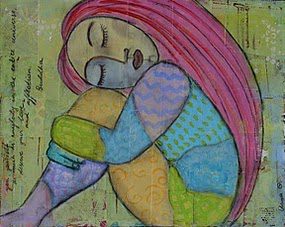 The following is a guest blog from one of my favorite psychiatrists, Dr. Ronald W. Pies, Clinical Professor of Psychiatry at Tufts University School of Medicine.
The following is a guest blog from one of my favorite psychiatrists, Dr. Ronald W. Pies, Clinical Professor of Psychiatry at Tufts University School of Medicine.
An old ethnic joke tells the story of the grandmother who is walking on the beach with her young grandson. Suddenly, she looks around and sees the boy a hundred feet out at sea, flailing his arms and treading water. The woman screams for help, and a middle-aged beachcomber quickly sizes up the situation, leaps into the surging waves, and brings the boy safely back to his mother. The grandmother thanks the man for his heroism, but looks a bit annoyed. She turns to the man and says, “I hate to mention it, Mister, but when the boy went in, he was wearing a hat!”
Now, the joke is usually told to illustrate the Yiddish concept of chutzpah—roughly, “nerviness” or gall. But the story may also be read as a parable of what the Buddhists call “attachment”. The Zen teacher, Ezra Bayda, defines “attachments” in this way:
“Attachments are simple beliefs—fantasies, in fact—that have become solidified as “truth” in our mind. They also partake of the energy of desire, which is based on the underlying belief that without some particular person or thing, we can never be free from suffering. Attachment also takes the form of avoidance; we believe we can’t be happy as long as a particular person, condition, or object is in our lives. To experience negative attachment, just think of your least favorite food or person.”*
Recently, I have started to think that nearly all our personal, social, and societal problems are closely linked to our excessive and irrational attachments. Then there are those insults and brickbats that pass for political discourse in this country—don’t get me started.
To be sure: up to a point, emotional “attachment” is crucial—without it, we would never form lasting relationships, or undertake difficult projects. It is its rigidity and intensity that determines whether or not a particular attachment is pathological. As a psychiatrist, I have seen thousands of patients whose suffering is, in part, the result of their irrational attachments. Of course, severe psychiatric illnesses—major depression, schizophrenia, bipolar disorder, and others—have strong biological and genetic factors “driving” them. It would be wrong and simplistic to explain these conditions as mere instances of “excessive attachment.”
But even in these severe illnesses, inappropriate attachment rears its head. For example, the individual with paranoid delusions is excessively attached to the idea that he or she is being targeted, monitored or persecuted. The person with obsessive-compulsive disorder is excessively attached to the performance of some anxiety-neutralizing ritual, such as checking the gas stove fifty times a day.
And what is the solution to our excessive attachments, in every-day life? The Buddhist master, Ajahn Chah (1918–92) finds the answer in the concept of anicca (or anitya). This is usually translated as “impermanence” or “uncertainty.” Ajahn Chah believed that much of our suffering stems from our unwillingness to accept the impermanence of all things. Sure, we often hear the expressions, “Nothing lasts forever” or “Easy come, easy go”—but how many of us have really understood the implications of impermanence? How many of us ever pause to consider our own mortality?
As Ajahn Chah notes, the Buddha taught us “…to look in the present and see the impermanence of body and mind, of all phenomena as they appear and cease, without grasping at any of it. If we can do this, we will experience peace. This peace comes because of letting go…” (from everything arises, everything falls away).
Just imagine how politics in this country might change, if partisans on all sides could “let go” of their rigid ideologies. Imagine how the animosity between religious groups would diminish. And imagine how our everyday unhappiness might melt away, if we could detach ourselves from our own preconceptions and prejudices. To put it a bit more humorously, consider the advice of Rabbi Rami Shapiro: “Don’t take life so seriously—it’s only temporary!”
*Adapted from E. Bayda, At Home in the Muddy Water: A Guide to Finding Peace within Everyday Chaos.

